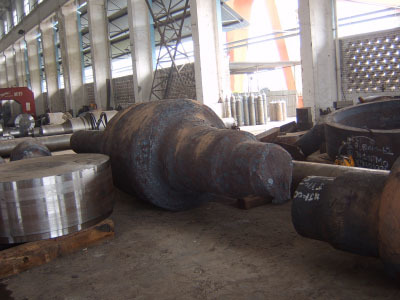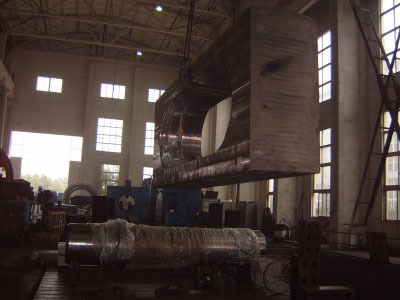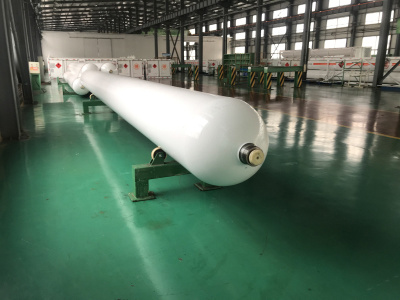Exploring the Benefits of Stainless Steel Forged Rings in Wind Turbines
Release Time:
Jul 28,2025
Exploring the Benefits of Stainless Steel Forged Rings in Wind Turbines Table of Contents 1. Introduction to Stainless Steel Forged Rings 2. The Importance of Wind Energy in Modern Society 3. The Forging Process: How Stainless Steel Rings Are Made 4. Advantages of Stainless Steel Forged Rings in Wind Turbines 4.1 Durability and Strength 4.2 Corrosion Resistance 4.3

Exploring the Benefits of Stainless Steel Forged Rings in Wind Turbines
Table of Contents
- 1. Introduction to Stainless Steel Forged Rings
- 2. The Importance of Wind Energy in Modern Society
- 3. The Forging Process: How Stainless Steel Rings Are Made
- 4. Advantages of Stainless Steel Forged Rings in Wind Turbines
- 5. Applications of Forged Rings in Wind Turbines
- 6. Case Studies: Success Stories of Stainless Steel Forged Rings
- 7. Future Trends in Stainless Steel Forging for Wind Energy
- 8. Frequently Asked Questions (FAQs)
- 9. Conclusion
1. Introduction to Stainless Steel Forged Rings
In recent years, the wind energy sector has experienced significant advancements, largely due to innovations in materials and manufacturing processes. Among these innovations, stainless steel forged rings have emerged as key components in the design and functionality of wind turbines. These rings, known for their robustness and reliability, play an essential role in the overall performance of turbine systems.
Stainless steel forging involves shaping metal using compressive forces, resulting in a product that is not only strong but also highly resistant to wear and tear. Given the harsh environmental conditions that wind turbines endure, the choice of materials is critical. In this article, we will explore why stainless steel forged rings are becoming increasingly popular in wind turbine manufacturing.
2. The Importance of Wind Energy in Modern Society
Wind energy is one of the fastest-growing renewable energy sources globally. With the push towards sustainable practices, wind turbines have become essential in reducing carbon footprints and promoting energy independence. As nations strive to meet stringent environmental regulations, the demand for clean energy solutions has surged.
Wind turbines are designed to convert kinetic energy from wind into electrical energy. The efficiency and longevity of these turbines hinge on their components, making it vital to select the right materials that ensure operational excellence. Stainless steel forged rings are a fundamental part of this equation, providing the strength and durability required for optimal performance.
3. The Forging Process: How Stainless Steel Rings Are Made
The manufacturing of stainless steel forged rings involves several meticulous steps. First, raw stainless steel is selected based on specific properties and requirements.
3.1 Heating and Shaping
The selected steel is then heated to a high temperature, making it malleable. Once heated, it is shaped into rings using hydraulic presses or hammers, applying immense pressure to achieve the desired dimensions.
3.2 Cooling and Treatment
After shaping, the forged rings undergo a cooling process, which helps in solidifying their form. This step is crucial, as it influences the mechanical properties of the rings. Post-cooling, the rings may be treated further with processes like annealing or quenching to enhance their strength and resistance to corrosion.
3.3 Finishing Touches
Finally, the forged rings are finished through machining to ensure precise dimensions and surface quality. This attention to detail ensures that the rings meet the stringent specifications required for wind turbine applications.
4. Advantages of Stainless Steel Forged Rings in Wind Turbines
Understanding the advantages of using stainless steel forged rings in wind turbines can shed light on their growing popularity within the industry. Below, we discuss key benefits that make these components vital for efficient turbine operation.
4.1 Durability and Strength
Stainless steel forged rings are known for their exceptional durability and strength. The forging process enhances the material structure, making it less prone to failure under extreme conditions. As wind turbines face continuous stress from high winds and variable weather, the resilience of these rings ensures that they can withstand such forces without compromising performance.
4.2 Corrosion Resistance
Wind turbines are often exposed to moisture, salt, and other corrosive agents, especially if located near coastal areas. Stainless steel is inherently resistant to corrosion, which significantly extends the lifespan of the components used in turbines. The use of forged rings minimizes the risk of rust and pitting, leading to reduced maintenance costs and downtime.
4.3 Cost-Effectiveness
While the initial investment in stainless steel forged rings may be higher than alternatives, their long-term cost-effectiveness is undeniable. The durability and reduced maintenance needs lead to fewer replacements and repairs over the turbine's lifespan, ultimately resulting in a lower total cost of ownership.
4.4 Weight Efficiency
One of the critical factors in wind turbine design is weight efficiency. Stainless steel forged rings provide a balance of strength and weight, allowing for more efficient designs that do not compromise stability or performance. Lighter components can lead to less material usage, lowering overall production costs and making installations easier.
5. Applications of Forged Rings in Wind Turbines
Stainless steel forged rings have various applications within wind turbines, each adding to the overall functionality and reliability of the systems. Some of the most common applications include:
5.1 Gearbox Components
Forged rings are used in gear systems within the turbine gearbox. Their strength ensures that they can handle the torque and forces involved in converting the wind's kinetic energy into electrical energy.
5.2 Rotor Blades and Hub Assemblies
The efficiency of rotor blades and their connections to the hub are crucial for optimal turbine operation. Stainless steel forged rings provide the necessary support and strength for these components, ensuring smooth operation.
5.3 Structural Framework
In the structural framework of the turbine, forged rings contribute to the overall integrity and stability. Their durability allows the turbine to withstand harsh environmental conditions and continuous operation.
6. Case Studies: Success Stories of Stainless Steel Forged Rings
Examining industry case studies illustrates the real-world impact of stainless steel forged rings in wind turbines.
6.1 Case Study 1: Leading Wind Turbine Manufacturer
A leading wind turbine manufacturer adopted stainless steel forged rings in their new turbine model. The results showed a 20% increase in efficiency and a significant reduction in maintenance costs compared to previous models.
6.2 Case Study 2: Offshore Wind Farms
In offshore wind farm installations, the use of stainless steel forged rings has been pivotal in enhancing the longevity of turbine components. These installations reported fewer service interruptions due to corrosion-related issues, allowing for more reliable energy production.
7. Future Trends in Stainless Steel Forging for Wind Energy
As technology evolves, the future of stainless steel forging in wind energy looks promising. Innovations in manufacturing processes, such as 3D printing and advanced alloys, are set to enhance the properties of forged rings even further.
7.1 Sustainable Manufacturing Practices
The industry is moving towards more sustainable manufacturing practices, focusing on reducing waste and energy consumption during the forging process. This shift not only lowers environmental impact but also aligns with the broader goals of renewable energy development.
7.2 Smart Manufacturing Technologies
Integrating smart technologies in forging processes can enhance precision and quality control, leading to better-performing forged components. Monitoring systems may help in optimizing production parameters, ensuring consistency and reliability in the final products.
8. Frequently Asked Questions (FAQs)
8.1 What are stainless steel forged rings?
Stainless steel forged rings are components manufactured through a forging process that enhances the strength and durability of stainless steel. They are widely used in various applications, including wind turbines.
8.2 Why are forged rings preferred over cast rings in wind turbines?
Forged rings have superior mechanical properties, including increased strength and resistance to fatigue. They are less prone to defects compared to cast rings, making them more reliable for critical applications in wind turbines.
8.3 How does corrosion resistance benefit wind turbines?
Corrosion resistance reduces the likelihood of material degradation, resulting in lower maintenance costs and longer service life for turbine components, particularly in harsh environmental conditions.
8.4 What is the role of forged rings in turbine gear systems?
Forged rings in gear systems provide essential strength and support to handle the high torque generated during energy conversion, contributing to the overall efficiency of the turbine.
8.5 Are there any advancements in the manufacturing of forged rings?
Yes, advancements include the use of smart manufacturing technologies and sustainable practices, which aim to improve precision, reduce environmental impact, and enhance the properties of forged rings.
9. Conclusion
The integration of stainless steel forged rings in wind turbines is a testament to the advancements in materials engineering and manufacturing processes in the renewable energy sector. These components not only enhance the durability, strength, and efficiency of wind turbines but also contribute to the overall sustainability of energy solutions. As the demand for wind energy continues to rise, the reliance on high-quality materials like stainless steel forged rings is expected to grow, paving the way for more innovative and efficient turbine designs.
In conclusion, the benefits of stainless steel forged rings in wind turbines are undeniable. By understanding their advantages and applications, we can appreciate their role in the future of clean energy. The continued evolution of manufacturing techniques and materials will only serve to bolster the effectiveness of these vital components, ensuring a brighter, sustainable energy future for all.
多行文本内容元素
富文本内容绑定数据后可解析HTML语言内容
Key words:
News Hotspot








